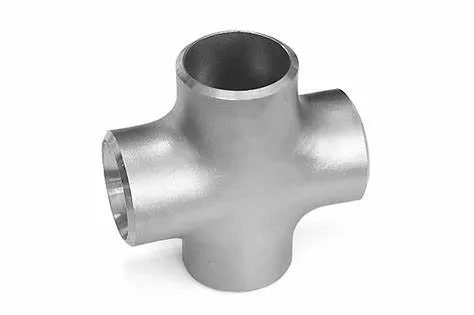-
Cangzhou Yulong Steel Co., Ltd.
-
Phone:
+86 13303177267 -
Email:
admin@ylsteelfittings.com
- English
- Arabic
- Italian
- Spanish
- Portuguese
- German
- kazakh
- Persian
- Greek
- French
- Russian
- Polish
- Thai
- Indonesian
- Vietnamese
- Zulu
- Korean
- Uzbek
- Hindi
- Serbian
- Malay
- Ukrainian
- Gujarati
- Haitian Creole
- hausa
- hawaiian
- Hebrew
- Miao
- Hungarian
- Icelandic
- igbo
- irish
- Japanese
- Javanese
- Kannada
- Khmer
- Rwandese
- Afrikaans
- Albanian
- Amharic
- Armenian
- Azerbaijani
- Basque
- Belarusian
- Bengali
- Bosnian
- Bulgarian
- Catalan
- Cebuano
- China
- China (Taiwan)
- Corsican
- Croatian
- Czech
- Danish
- Esperanto
- Estonian
- Finnish
- Frisian
- Galician
- Georgian
- Kurdish
- Kyrgyz
- Lao
- Latin
- Latvian
- Lithuanian
- Luxembourgish
- Macedonian
- Malgashi
- Malayalam
- Maltese
- Maori
- Marathi
- Mongolian
- Myanmar
- Nepali
- Norwegian
- Norwegian
- Occitan
- Pashto
- Dutch
- Punjabi
- Romanian
- Samoan
- Scottish Gaelic
- Sesotho
- Shona
- Sindhi
- Sinhala
- Slovak
- Slovenian
- Somali
- Sundanese
- Swahili
- Swedish
- Tagalog
- Tajik
- Tamil
- Tatar
- Telugu
- Turkish
- Turkmen
- Urdu
- Uighur
- Welsh
- Bantu
- Yiddish
- Yoruba

Nov . 17, 2024 10:25 Back to list
Understanding ANSI B16.1 Standards for Cast Iron Pipe Flanges and Fittings Design
Understanding ANSI B16.1 A Comprehensive Overview
ANSI B16.1 is a critical standard in the field of pressure piping components, particularly focusing on cast iron flanges. Established by the American National Standards Institute (ANSI), it outlines the design, materials, and testing criteria necessary for producing reliable and efficient cast iron flanges used in various applications, including waterworks, wastewater treatment facilities, and industrial piping systems.
The Importance of ANSI B16.1
The ANSI B16.1 standard is essential because it provides a uniform method for both manufacturers and users to ensure the compatibility and integrity of flange connections. Flanges are integral components of piping systems that allow for connections between pipes, valves, and other equipment. Therefore, the standards established by ANSI B16.1 enhance safety, performance, and ease of maintenance during the operational life of these productions.
Scope and Applications
The ANSI B16.1 standard covers several critical aspects of flanges, including
1. Materials The standard specifies the types of cast iron permissible for the construction of flanges. Typically, this includes gray cast iron and ductile iron, which exhibit favorable mechanical properties and corrosion resistance.
2. Dimensions ANSI B16.1 also provides detailed dimensional specifications. This includes dimensional tolerances and flange thicknesses, which must be adhered to ensure proper fit during assembly.
ansi b16 1

3. Pressure Ratings The standard delineates pressure-temperature ratings for the specified flanges. It is crucial that the selected flange can withstand the operational conditions, including temperature and pressure variations.
4. Marking To ensure traceability and proper identification of the flanges, ANSI B16.1 outlines marking requirements, which include the manufacturer’s name, the material grade, and the pressure class.
5. Testing The standard sets forth testing methods to ensure quality and performance. This includes hydrostatic testing for leaks and pressure integrity, which is vital for safety in applications where flanges are under significant stress.
Practical Implications
When working with ANSI B16.1-compliant flanges, users can be assured of a standardized quality that promotes interoperability and ruggedness in piping systems. In practical applications, this means that maintenance activities can be performed with confidence, and the integration of new equipment into existing systems is streamlined.
In cases where modifications or repairs are needed, having a universally recognized standard simplifies procurement processes and enhances collaboration among suppliers, engineers, and maintenance personnel.
Conclusion
In summary, ANSI B16.1 plays a pivotal role in setting benchmarks for the design and usage of cast iron flanges in various industrial applications. As industries increasingly rely on standardized components to ensure safety and efficiency, the adherence to ANSI B16.1 becomes indispensable. Its comprehensive criteria not only enhance the functionality and longevity of piping systems but also support the overarching need for quality assurance in engineering practices. Therefore, understanding and complying with ANSI B16.1 is critical for engineers, manufacturers, and users involved in the design and implementation of piping systems.
Latest news
-
ANSI 150P SS304 SO FLANGE
NewsFeb.14,2025
-
ASTM A333GR6 STEEL PIPE
NewsJan.20,2025
-
ANSI B16.5 WELDING NECK FLANGE
NewsJan.15,2026
-
ANSI B16.5 SLIP-ON FLANGE
NewsApr.19,2024
-
SABS 1123 FLANGE
NewsJan.15,2025
-
DIN86044 PLATE FLANGE
NewsApr.19,2024
-
DIN2527 BLIND FLANGE
NewsApr.12,2024
-
JIS B2311 Butt-Welding Fittings LR/SR 45°/90° /180°Seamless/Weld
NewsApr.23,2024











